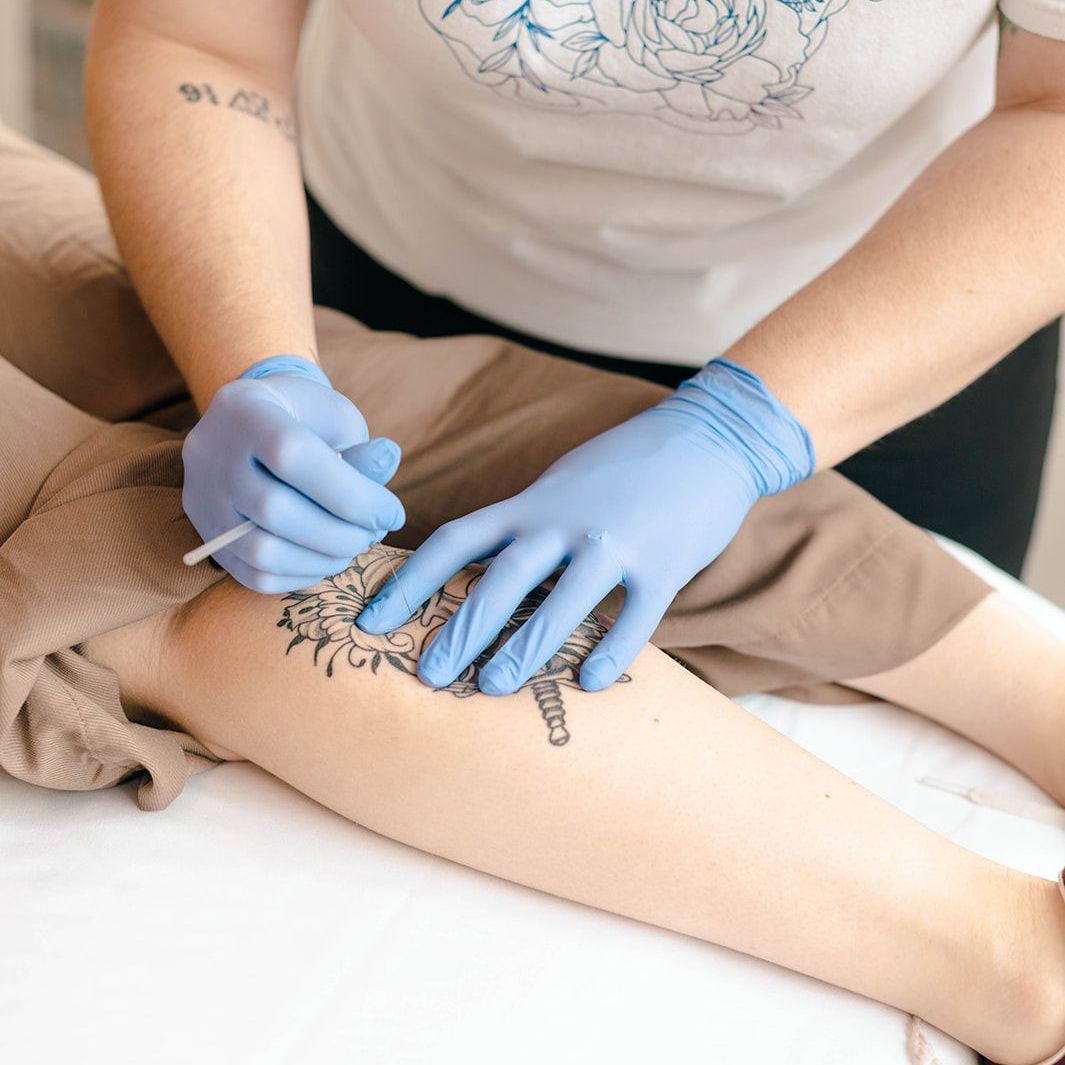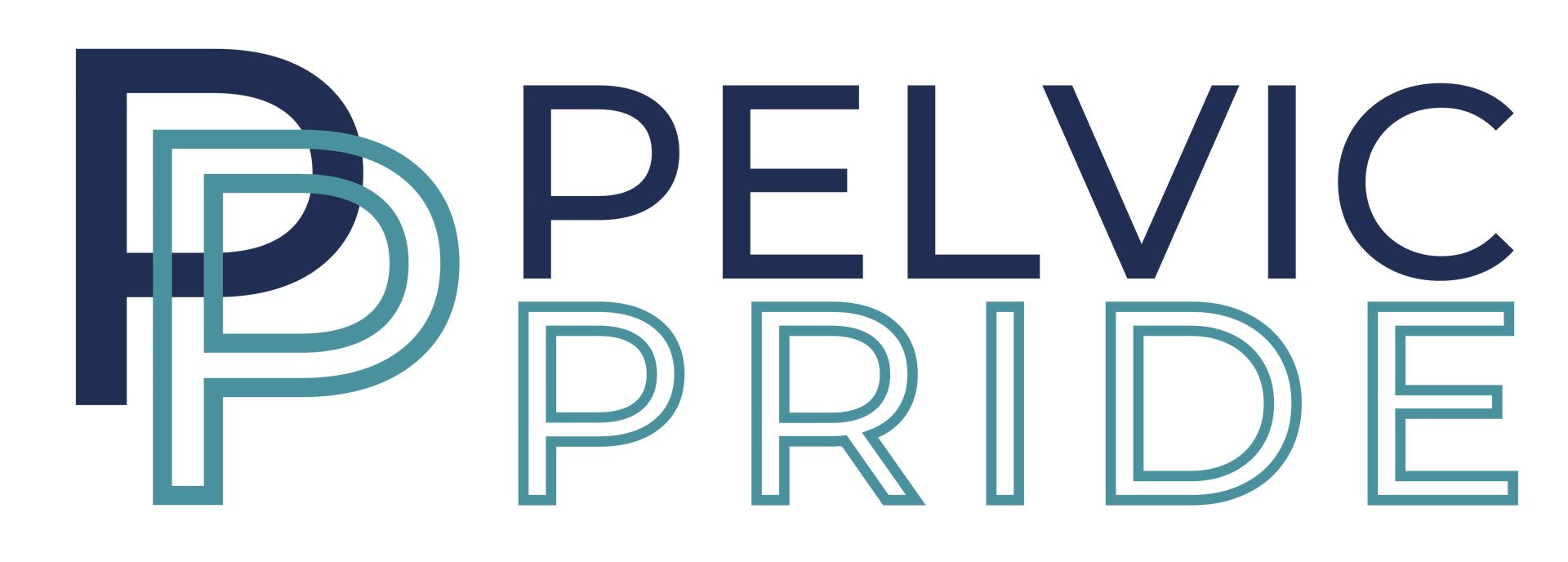The Pros and Cons of Dry Needling
Did your physical therapist mention the option to add dry needling to your care and now you are wondering if you should do it? Anytime you consider starting a new treatment you always weigh the pros and cons right? So let’s go over the pros and cons of dry needling!
First, what is dry needling?
Dry needling is a technique that utilizes a thin needle to release trigger points and decrease tension in the muscle being treated. It can be used alone or in combination with electrical stimulation to treat muscles, tendons, and even scar tissue.

The Pros of Dry Needling
Pain relief
To avoid getting too deep into things we will keep this pretty easy to understand - but humor my anatomy nerd journey just a little bit! So when you have a trigger/tender point or a taut band of muscles, you may also experience pain.
This can occur for a few reasons with a big one being that the trigger point is not getting good blood flow to the area. One of the jobs of our blood system is to bring oxygen to the area and carry away hydrogen ions. This is important because hydrogen ions create an acidic environment in the tissue which irritates the nerves and creates the sensation of pain.
When we introduce a needle to the area with dry needling, we are trying to decrease the trigger point/taut band while also creating micro-trauma to the tissue. When this happens, the body goes into healing mode which brings that oxygenated blood to the area. Blood cells will drop off the oxygen and pick up the hydrogen ions, decreasing acidity in the tissue and decreasing pain.
While we can go way further into the why and how of this, I won’t bore you! So to recap:
Needle > micro-trauma > new blood for healing > oxygen increases in the tissues and hydrogen decreases in the tissue > decreased acidity > decreased pain perception
Improved mobility
When I describe trigger points to my patients in the clinic I use the analogy of a brick wall. The brick wall is the muscle and the bricks are the muscle fibers. When we get a trigger point in the muscle, that is like a few of the bricks in the wall not being in their ideal alignment.
Inside of that muscle fiber are two structures called actin and myosin who overlap more or less depending on if the muscle is contracted or relaxed. Sometimes actin and myosin get stuck overlapping and need some help relaxing.
When we tap the needle into the muscle to treat the trigger point we are getting those muscle fibers to let go/relax and the trigger point decreases, the actin and myosin are in better alignment and the muscle is better able to do its job.
By improving the function of the muscle and decreasing the pain, you can experience an increase in mobility of the muscles and joints that are impacted by the muscle just dry needled.
Avoid surgery or extra medications
Instead of opting for pain medications, steroid injections, or potentially unnecessary surgery, dry needling is a more conservative option for symptom management through the reduction in pain and improved mobility.
I recently worked with a patient who was having numbness and tingling in his neck, shoulder, and arm. After testing to rule out cardiac issues, the findings came back as stenosis. While dry needling will not stop or reverse his stenosis, we were able to eliminate this numbness, tingling, and pain. As a result he is not pursuing more invasive procedures at this time.
Gets to deeper or hard to reach muscles
By utilizing dry needling we are able to get deeper or hard to reach muscles in the body. A common example of this is the gluteus muscles. The gluteus minimus, medius, and maximus have varying degrees of overlap at the outside hip. When we are utilizing various treatment techniques we have to consider the tissues we are treating through.
With something like cupping or instrument-assisted soft tissue mobilization (IASTM), also commonly referred to as Graston or scrapping, we are administering treatment through skin, adipose tissue, fascia, and muscles from the superficial layer to the deep layer. With dry needling we are able to insert the needle past the skin, adipose, fascia, and superficial muscle layers to truly reach that deepest layer.
We are also able to treat muscles that are in a location that is harder to reach due to anatomy like the iliacus muscles inside of the pelvis or the subscapularis (between the shoulder blade and the rib cage). Dry needling gives us the opportunity to treat these muscles with a tool that has a better reach.
Can be performed in conjunction with other treatments
When you opt to add dry needling to your care routine, you are not limited to only dry needling. This is a treatment that can and should be performed along with other techniques to provide you with the best symptom reduction or resolution possible.
Can be performed in a shorter treatment session
Here at Pelvic Pride, after the completion of a thorough initial evaluation to establish care, we offer 30-minute Dry Needling treatment sessions to our patients that are looking for a streamlined dry needling appointment. We can also incorporate dry needling into our full 60-minute appointments, however a shorter session may be appropriate when we are only doing dry needling.
The Cons of Dry Needling
It requires the use of needles
I know that sounds silly but it is important to address that many people have a fear of needles and it is important to consider your feelings around the use of needles for treatment before saying yes.
As someone who has tattoos but hates getting my blood drawn, I completely understand that this is an important factor to weigh when determining if dry needling is a good fit for your treatment.
Soreness is expected
I describe the feeling after being dry needled as the same kind of muscle soreness from a good workout. It typically lasts for 24-72 hours, but you should still be able to do your normal daily routines. Due to the expected soreness, I typically warn my patients to avoid dry needling (especially for the first time) right before a busy weekend or big event.
Bleeding and bruising
Due to the vascular structures in the body, it is a possibility that you may bleed or have bruising after dry needling. We do our best to ensure we avoid these structures which is why we will spend our time thoroughly palpating (touching) the area. This is to help minimize the risk of the needle piercing an artery or vein. If it does, it is not a major concern. We are training to apply pressure after each needle is removed and this helps to minimize or prevent bleeding/bruising.
Important structures may be in the way
Along with thorough palpation to make sure we aren’t going to needle into arteries or veins, we are also aware of not needling into more vital structures.
For those with low back pain, therapists have a limitation in the upper lumbar spine due to the location of the kidneys. With abdominal pain we are cautious around the bladder and GI structures. And for pretty much anything in the thorax we are avoiding the lungs.
This doesn’t mean we cannot treat those areas, it just means we will needle in very specific ways to ensure your safety. This also means you may point to an area of pain to ask if we can needle it and the answer could be no.
Limited access in your area
Unfortunately, not all states allow physical therapists to provide dry needling services. If you are in a state where PTs cannot dry needle, I highly recommend reaching out to an acupuncturist and sharing your treatment goals with them.
Side note:
Anytime I share blogs or social media posts about dry needling I get multiple messages about how acupuncture has a treatment method that is very similar to the approach taken with dry needling. I will not speak for acupuncturists and their treatment methods, but I am a big supporter of acupunctures and frequently recommend it for my patients for a variety of treatment goals.
Contraindications of Dry Needling
It is important to recognize that there are limitations to dry needling including instances in which dry needling is not an appropriate treatment option. This can be broken into absolute contraindications and relative contraindications.
Absolute contraindications include a phobia of needles, the inability to consent to treatment, or needling over areas of lymphedema. Consent is a huge part of our ethos at Pelvic Pride and we will never provide a treatment to a patient without explicit, enthusiastic consent. If you have lymphedema and would like to still try needling in a different area I recommend you discuss your desires with your medical providers first to ensure the risk/reward benefit is appropriate and you receive written medical clearance for treatment.
Relative contraindications include the first trimester or pregnancy (when the risk of pregnancy loss is the highest), individuals who are immunocompromised due to the risk of infection, and over areas where an implant may exist. This includes the pectoralis or breast area, deltoids, biceps, buttocks, and calves.
Where to find dry needling treatment in Maryland
At Pelvic Pride Physical Therapy & Wellness, Dr. Joy & Dr. Eirika are certified to provide dry needling to our patients, so you are in the right place! We are conveniently located in the Federal Hill neighborhood in Baltimore MD. Fill out our
contact form & our Patient Care Specialist will reach out to you ASAP!
Next on Your Reading List
Love our content? Let's stay connected!
Subscribe to our newsletter for personalized updates when new blog posts are dropped.






